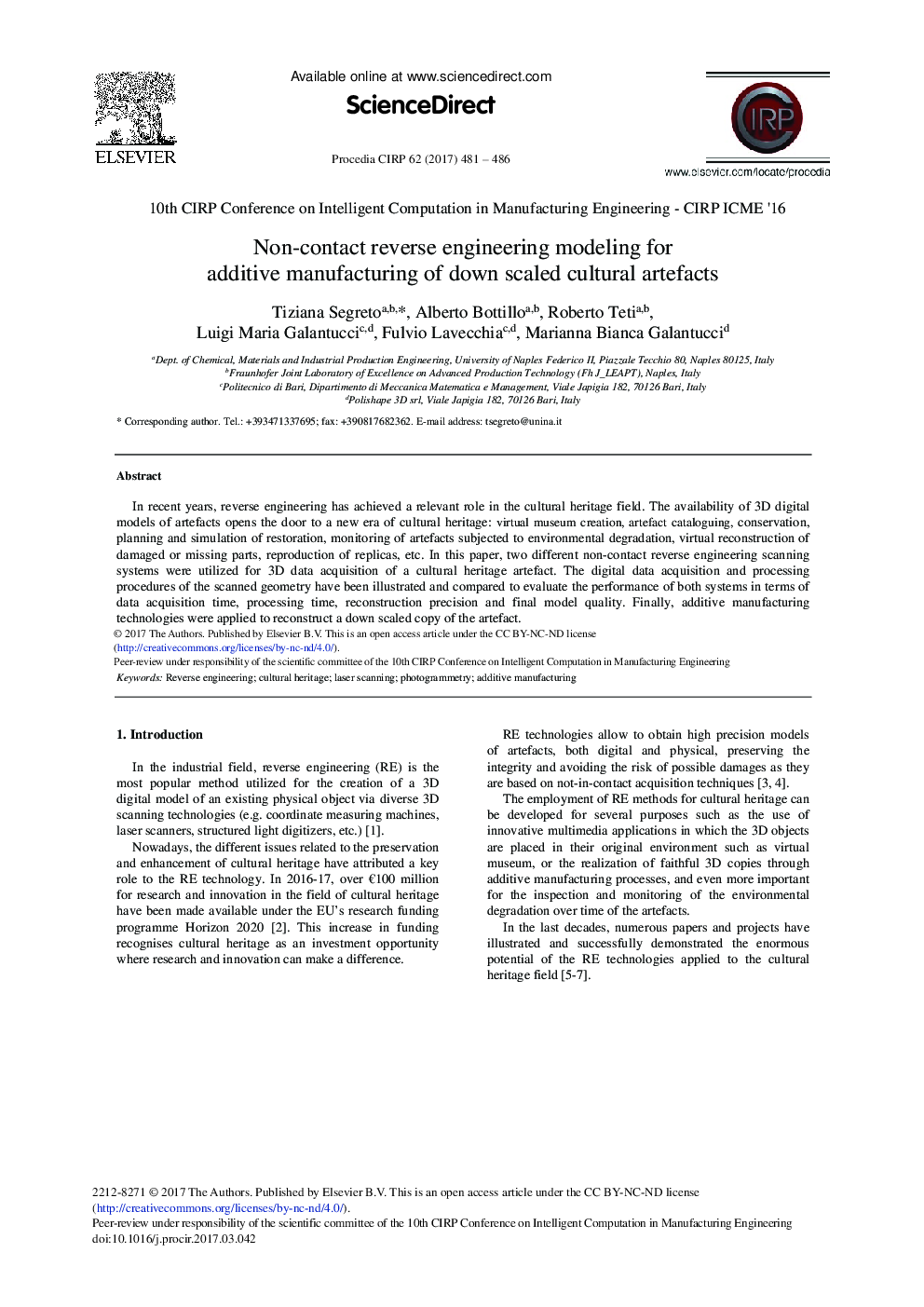| Article ID | Journal | Published Year | Pages | File Type |
|---|---|---|---|---|
| 5470405 | Procedia CIRP | 2017 | 6 Pages |
Abstract
In recent years, reverse engineering has achieved a relevant role in the cultural heritage field. The availability of 3D digital models of artefacts opens the door to a new era of cultural heritage: virtual museum creation, artefact cataloguing, conservation, planning and simulation of restoration, monitoring of artefacts subjected to environmental degradation, virtual reconstruction of damaged or missing parts, reproduction of replicas, etc. In this paper, two different non-contact reverse engineering scanning systems were utilized for 3D data acquisition of a cultural heritage artefact. The digital data acquisition and processing procedures of the scanned geometry have been illustrated and compared to evaluate the performance of both systems in terms of data acquisition time, processing time, reconstruction precision and final model quality. Finally, additive manufacturing technologies were applied to reconstruct a down scaled copy of the artefact.
Related Topics
Physical Sciences and Engineering
Engineering
Industrial and Manufacturing Engineering
Authors
Tiziana Segreto, Alberto Bottillo, Roberto Teti, Luigi Maria Galantucci, Fulvio Lavecchia, Marianna Bianca Galantucci,
